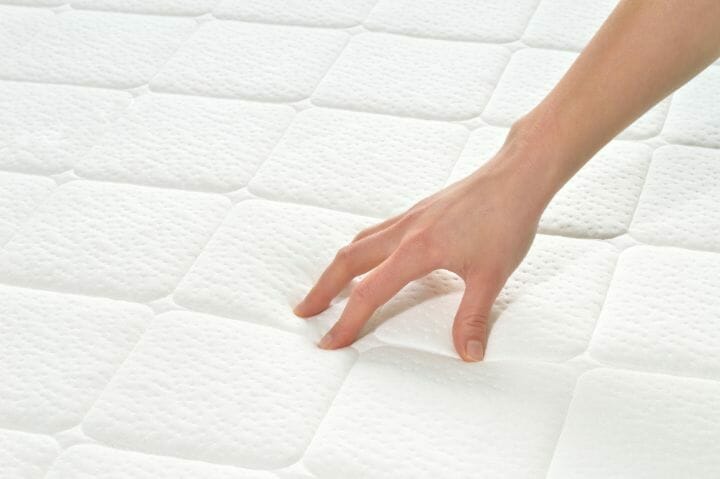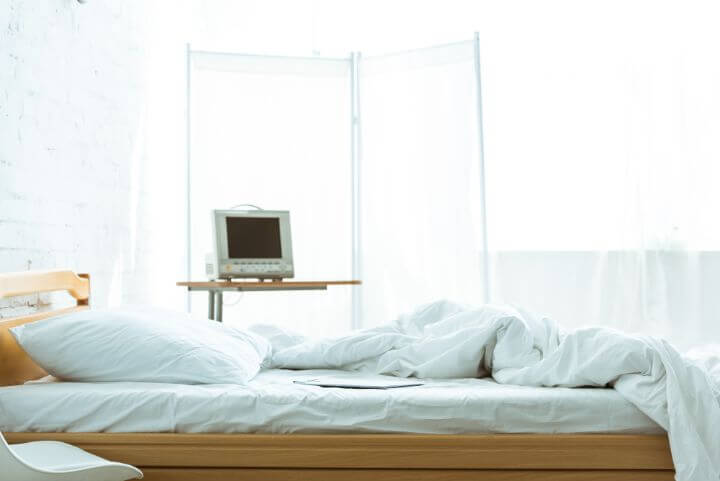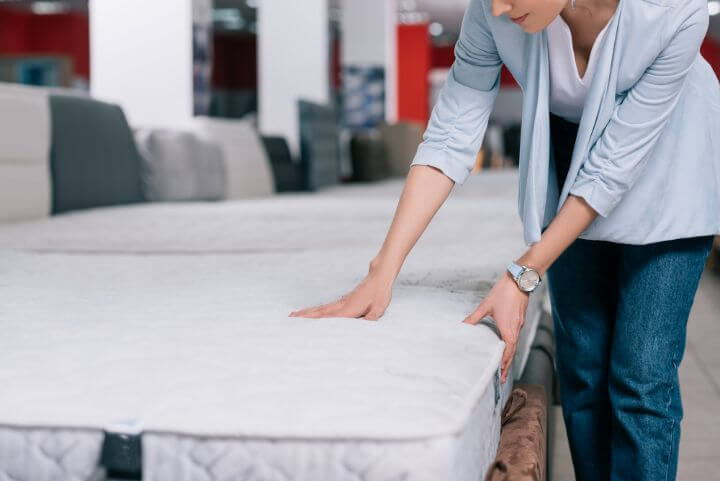Medical mattresses are used in the treatment of patients who are bed-ridden either due to old age, disease or injury. They come in several varieties and are based on a multitude of different technologies.
Each has its advantages and disadvantages and each one has specific uses for which they are best employed.
Two types of air mattresses that are commonly used to make sure patients do not suffer from pressure sores are Low air loss mattresses and Alternating pressure mattresses.
In this article, we discuss the two types of mattresses, their similarities, differences and uses. Let’s start first with the similarities.
Contents
Similar Design Elements
Both these types of mattresses operate on different principles. However, there are similarities. They are both air-filled mattresses and require a constant flow of air.
Therefore, air pumps are supplied along with both types of mattresses so that one can supply air into their body. The air being streamed is measured in litres and adjusted as per the user’s body type and weight.
The pumps usually come with presets based on how the user is positioned at any particular time. When the user is resting, the pump needs to readjust the airflow to reduce pressure so the mattress gets softer, which can give optimum rest to the patient.
However, when the user needs to sit up, the pump should increase pressure so that the mattress can become harder to help the patient move easily and will not sunk down into the mattress.
Low Air Loss(LAL) Mattress
Low air loss mattresses have tiny holes on their surface which enable air to be released very slowly from the mattress, giving the patient a feeling of weightlessness. The holes are cut into the mattress using laser technology. An air blower typically blows 100-150 litres of air inside the mattress.
The feeling of weightlessness which the patient gets is very useful in the recovery of those patients who are bedridden for a long term and need a very soft and comfortable bed so that they do not develop pressure sores.
Similarly, the air releasing from the mattress helps to reduce the occurrence of skin ulcers. Another advantage of this process is that it causes wicking of moisture, thus the skin remains dry and improving comfort while reducing the chances of skin breakdown.
The dry and comfortable feeling is very important from a psychological point of view as well. For patients who are long term bedridden, it is very important that they get a comfortable environment in bed so that they are in a positive frame of mind and feel relaxed.
The constant air flow also helps patients who are feverish, since they will keep the patient cool and help reduce the moisture from sweat.
Low air loss mattresses are specifically recommended for wound therapy as they can significantly reduce recovery time and the number of complications. Low air loss mattresses help to reduce moisture levels, and also improve blood circulation to the wound site.
The video below shows a detailed guide to your Low air loss mattress.
Alternating Pressure Mattress
Alternating pressure mattresses have small air cells (also known as bladders). The bladders are inflated alternatively, i.e. if the first one is inflated the next one will be deflated, the third one inflated and so on. This helps relieve pressure from the skin.
Almost all the cells have alternatingly increasing or decreasing pressure of air, the top part of mattress where the head is located remains constantly inflated, thus giving the user the sensation of sleeping on a pillow. Apart from reducing the pressure on your skin, the alternating inflation improves blood flow
There are preset cycles on the air blower that allows you to set the frequency with which pressure shifts happen in the mattress. You can thus customize the frequency based on how much discomfort the patient is feeling.
While the alternating cycles offers optimum level of comfort, it makes the blower loud when shorter cycles are used, because it needs to output more air.
You may also like Best Memory Foam Toppers for Seniors
Comparison: Low Air Loss vs Alternating Pressure
As already discussed, both mattresses are efficient in reducing the possibility of skin breakdown and providing comfort to the patient
However, Low air loss mattresses offer better airflow and are better at moisture control, thus helping to prevent and treat skin ulcers more effectively.
Alternating pressure mattresses offer optimum comfort, and also help to improve circulation of blood in the affected areas thus helping to heal the injury more effectively.
Hybrid Systems: Low Air Loss, Alternating Pressure Mattress
Since both the mattress systems have their own advantages and disadvantages, manufacturers have also produced hybrid products that combine the best of both worlds. These “Dual Therapy” mattresses are ideal for use for bariatric patients who are at a higher risk of pressure sores because of their size.
This type of mattress has a cover with low air loss, which gives exactly the same benefits as a Low air loss mattress. The bottom part is made from an Alternating pressure mattress.
While the Alternating pressure system helps to heal multiple wounds quickly, the Low air loss system keeps the patient more comfortable, reduces moisture and heat and gives the patient a weightless feeling.
In the case of bariatric patients, more airflow is required to counteract the weight and higher moisture. Accordingly, the airflow pump is attuned for higher airflow at all times.
Medical Mattress: What to Consider before Buying
Here are some tips on how to choose a mattress.
- The air pump should support 24/7 usage. Air pumps that pump in the air that is already in the air cells are preferable, rather than those which bring in outside air.
- The patient needs to be enveloped by the mattress, rather than sitting atop it like other mattresses. This is important as otherwise the benefits of pressure redistribution are gone.
- For bariatric patients, the mattress should be capable of supporting higher weights.
- The mattress should, of course, fit the bed on which it is to be used.
- Use a loose, water-resistant and vapour permeable cover for these mattresses.
You may also like Bedridden Exercise Equipment
Patient Details to Think of before Deciding Which Mattress to Use
When considering to buy a pressure-relief mattress, the following questions about the patient need to be answered before you decide on which system, type and design to purchasing:
- How mobile is the patient?
- Do they have a previous history of skin breakdown/pressure sores?
- What are the risk factors? (check if a skin assessment is required)
- Are pressure sores already present? If so, how advanced are they and where are they located on the patient’s body?
- Does the patient have a decent balance? (If not, air pressure based mattresses might seem a bit uncomfortable to them)
You may also like Best Mattress For Spinal Stenosis
Conclusion
Low air loss and Alternating pressure mattresses are the two most popular types of air mattresses that are recommended for patients with pressure sores, or those who are at high risk of pressure sores since they are expected to be in the bed for a long period of time.
Both types of mattresses have a similarity in that they operate on an air pressure basis. An air pump is used to push in the air to both types of mattresses.
In both cases, the air pumps have presets which allow them to reduce the airflow when the patient is resting (to make the mattress softer) and increase the airflow when the patient is sitting up ( to make the mattress firm)
Low air loss mattresses have a layer of tiny holes in them, which help the air to escape at a slow pace, creating an envelope of air above the mattress which not only helps in distributing the pressure on the patient but also managing the moisture due to perspiration, provides heat to the pressure wounds which make them heal more easily and keeps the patient comfortable.
The Alternating pressure mattresses, on the other hand, uses several sleeves or pockets of air, which are alternatively inflated and deflated, thus rebalancing the overall pressure on the patient’s body and also providing him with comfort.
The head of the Alternating pressure mattress does not have these Alternating pressure sleeves, thus acting as a pillow for the patient’s head.
While both types of mattresses are useful for reducing pressure sores and keeping the patient comfortable, Low air loss mattresses are also useful in controlling perspiration levels and managing body heat.
Lastly, due to the benefits that both types of mattresses provide, manufacturers have also produced hybrid mattresses, which combine the benefits of the two.
These mattresses use a Low air loss system at the top, with an Alternating pressure system at the bottom, and are useful for bariatric patients who are more susceptible to pressure sores due to their weight.
As always, the advice and recommendations given in this article are not to be construed as medical advice. Please consult with your doctor who will be able to guide you on the best way to approach the specific condition of your loved one or yourself.




